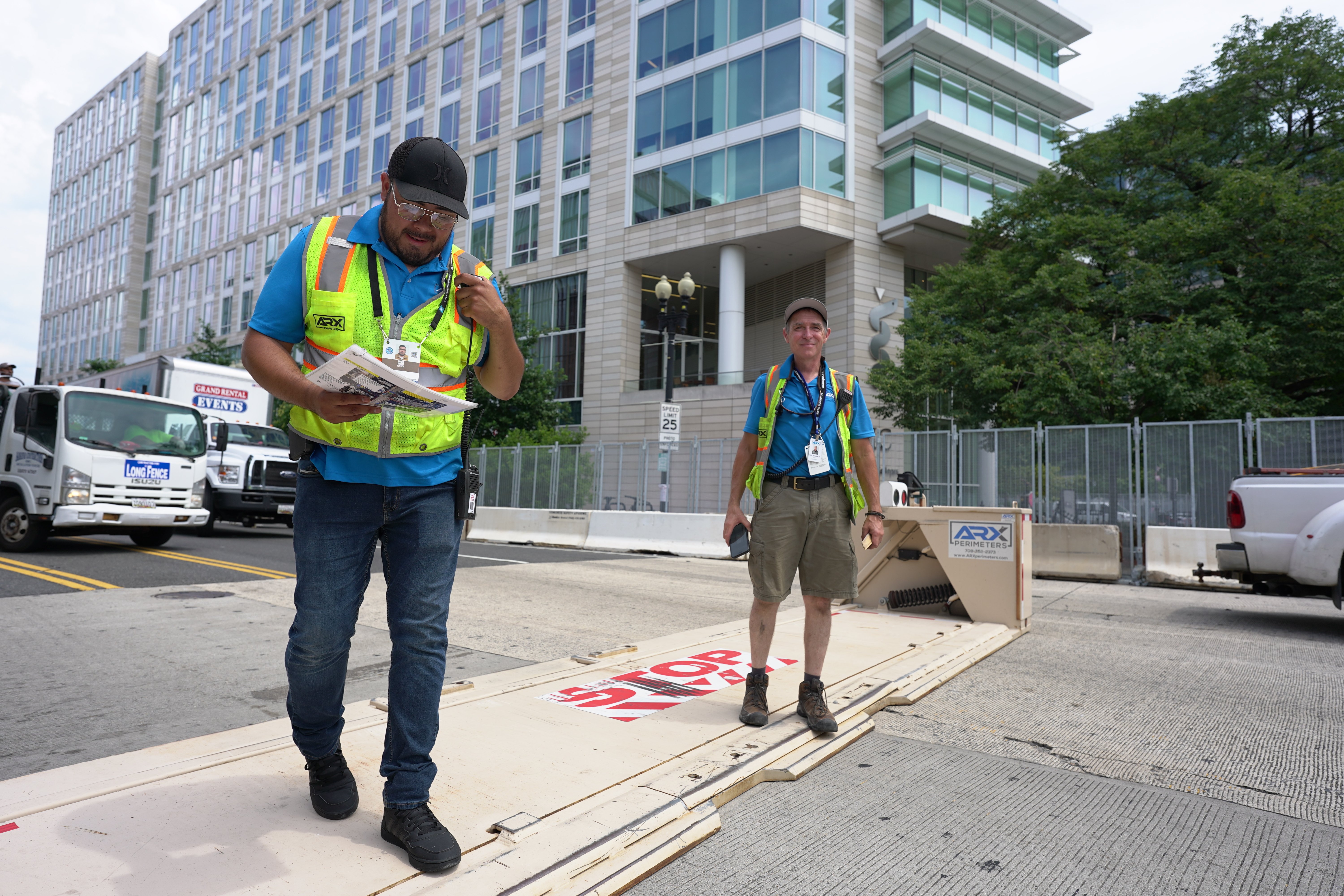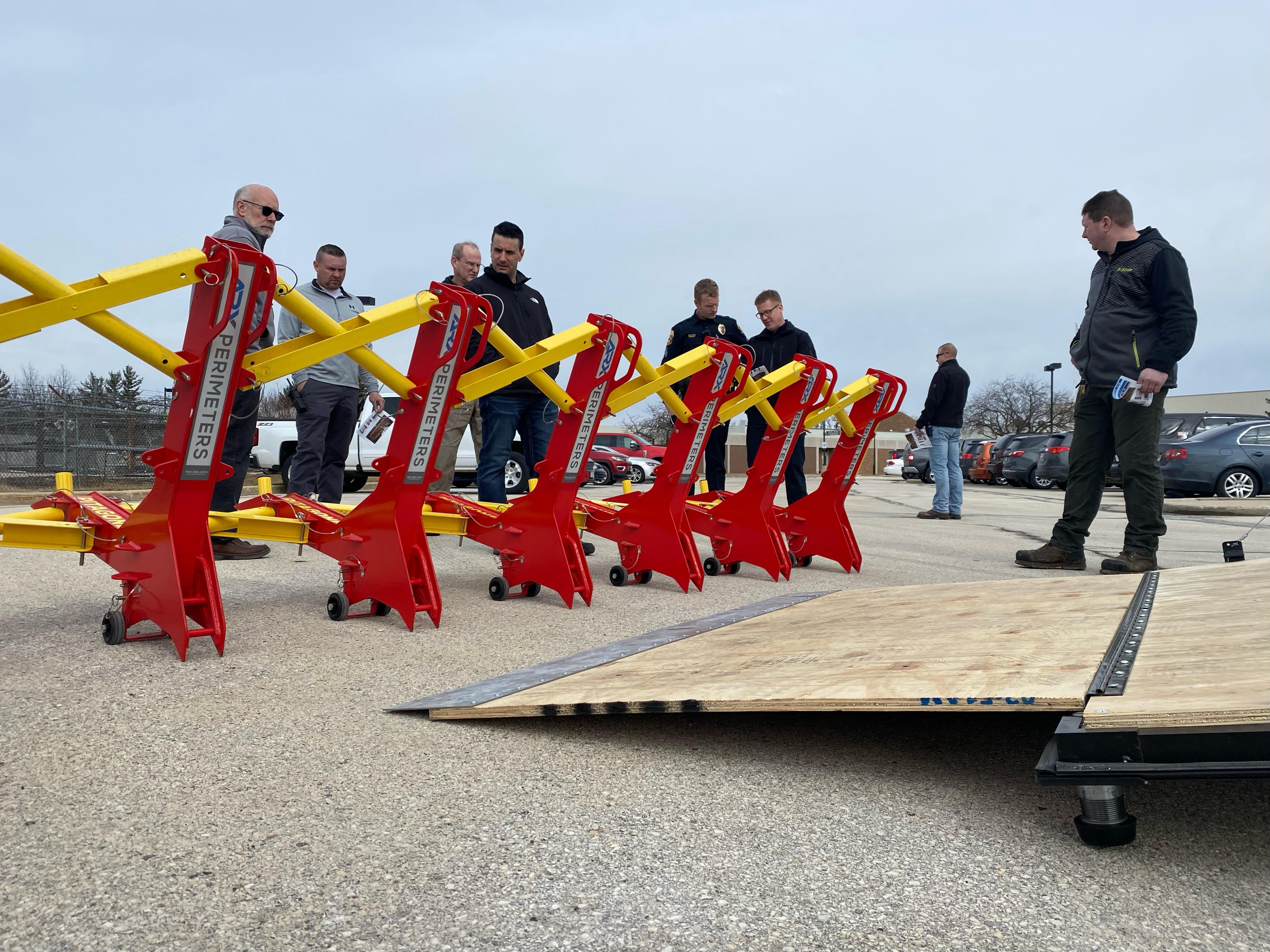Hostile Vehicle Mitigation, as known in the industry as HVM, is a strategic approach to how security authorities implement techniques and equipment to prevent or stop vehicle attacks on facilities or public spaces. The term "hostile vehicle mitigation" has increased by 70% in online searches over the past 12 months, leading us to believe that people like you are taking precautions when it comes to safeguarding your people, places, and things from vehicle attacks.
When planning special events or permanent perimeter security measures, authorities responsible for a hostile vehicle mitigation strategy will look at a host of factors in order to determine the right defensive approach.
Understanding how vehicle attacks happen will help guide your approach to a successful implementation.
What Is A Hostile Vehicle Attack?
A hostile vehicle attack is when a person drives their vehicle deliberately into an unauthorized area with the intent to cause property damage, injury or death to persons occupying the area, or disrupt business activities. These attacks happen all across the world and have been a tactic for terrorists and hostile intruders in recent decades.
In a recent article, we discussed the topic, “Are Vehicle Attacks Increasing In The US? Time To Look At Hostile Vehicle Mitigation” where we took a hard look at the most recent and notable vehicle attacks in the United States.
How To Develop A Hostile Vehicle Mitigation Strategy
There are a host of factors that need to be considered prior to developing your HVM strategy. The ultimate goal is to be prepared in the event of an attack and prevent damage to property, injury to persons, or even death. Here are a few factors that need to be considered:
- Direction from which an attack could happen - understanding which direction a vehicle attack could happen from will help determine where barriers need to be deployed. Clearly identifying these avenues of approach will make your barrier plan more effective.
- Speed at which a vehicle could reach prior to striking the perimeter - does the restricted area have a direct avenue that a vehicle could approach? Will this area allow the vehicle to reach high speeds therefore defining the crash/penetration rating that your barrier will need?
- Permanent or Mobile barrier systems - if you are in the design phase of a project, will the architects include barrier systems in their design that are permanent? Or if your barrier plan only calls for you to temporarily shut down streets or other public spaces, mobile vehicle barriers will be deployed.
- What assets are you protecting - are you protecting a building that is on a street or back further on the property? Are you protecting persons occupying a public area? Understanding the distances your personnel or assets are from a potential threat will help you determine which barrier system you will need to utilize based upon their respective crash rating.
What Are Hostile Vehicle Mitigation Barriers?
Often referred to as vehicle barriers, hostile vehicle mitigation barriers are devices or structures used to stop vehicles from entering unauthorized areas to protect personnel or assets. These barriers are placed into two separate categories:
- Active vehicle barriers - these barriers are devices that can either be moved or operated manually or mechanically (often referred to as “mobile vehicle barriers”) and restrict access to vehicles in roadways or other areas of protection.
- Passive vehicle barriers - these barriers are permanent fixtures around the perimeter of a building or other restricted areas.
Examples of active vehicle barriers? |
Examples of passive vehicle barriers?
|
How are Vehicle Barriers Crash Tested & Certified?
There are multiple crash-test certifications around the world. In order for any HVM barriers to be certified they must go through a series of tests. If you’d like to learn more about crash tests, visit our article on how crash-tests are conducted. Here are some of the crash-tests:
- ASTM Standards - This test method provides a structured procedure to establish a penetration rating for vehicle perimeter barriers subjected to a vehicle impact. ASTM is measured by the distance a vehicle weighing 15,000 lbs travels after impacting a vehicle barrier going 30 mph, 40 mph, and 50 mph.
- IWA 14 - International Workshop Agreement (IWA) 14, which specifies requirements for a vehicle security barrier’s essential impact performance. This standard is used across the globe.
- PAS 68 - This certification is the benchmark in the UK.Published by the British Standards Institution (BSI), PAS 68 is a publicly available specification that provides in-depth impact test specifications for vehicle security barrier systems, bollards and road blockers.
Find The Right Hostile Vehicle Mitigation Barrier System
Hostile vehicle attacks happen and more often than you might think. As an authority responsible for protecting property and people, being prepared before an attack happens is critical to your job.
There are many vehicle mitigation barriers across the globe. Finding the right solution for your needs can be a difficult task. If you are looking for a barrier system in the US, ARX Perimeters specializes in matching your organization with the right hostile vehicle mitigation solution.
Take a look at our vehicle barrier solutions and reach out to us for guidance on hostile vehicle mitigation solutions.
Related articles

From Perimeter Protection To Complete Site Security: How ARX Became The Leader
Carson Schenk | Aug 12, 2025 8:11:15 AM

What To Look For In A Hostile Vehicle Mitigation System | Vehicle Barriers
Chase Tobin | Feb 26, 2025 9:08:25 AM



